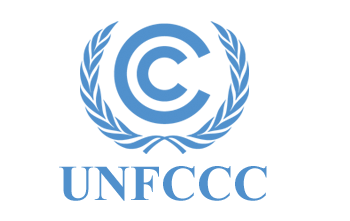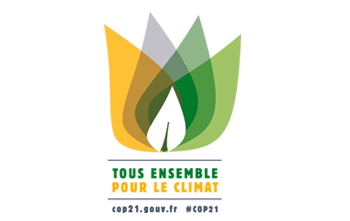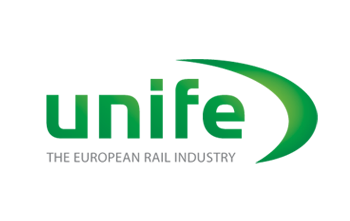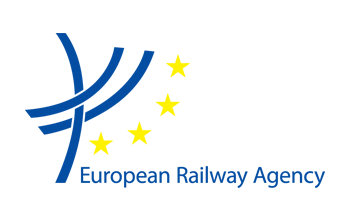Sustainability in Rotterdam Station
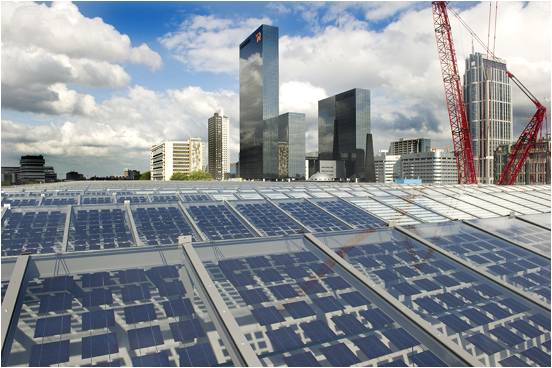
The glass-glass solar panels will be fully integrated into the station’s glass roof. They are expected to generate 350 megawatt hours per year, enough to supply about one hundred households. The energy is used in the new terminal for escalators, elevators and lighting. Solar energy supplies about fifteen percent of the energy required by the public transport terminal. A total of 3,107 solar cells are installed on the roof, covering nearly 10,000 m2 (equivalent to a football field).
The solar panels Rotterdam are placed in 2011-14 and completely installed by 2015.
In the design of Rotterdam Central Station various sustainability elements were incorporated such as solar cells, heat - storage (TES) and mirrors in the ceiling of the station for extra daylight. Also, a separate sewerage system is implemented in the station. These examples are consistent with initiatives to progress sustainability by ProRail and the province of South Holland. They also fit into the objectives of the Rotterdam Climate Initiative.
CO2 Performanceladder tool
The CO2-Performanceladder is a procurement tool to encourage companies to be aware of their CO2 emissions (and those of their suppliers), and to be permanently on the lookout for new ways to save energy, use materials efficiently, and to use renewable energy. It encourages companies to actually carry out such measures and to share the knowledge they have acquired in the process, and to look for yet more ways of cutting emissions, with colleagues, research institutes, NGO’s and government bodies.
The instrument is part of the ambition to introduce a limited set of instruments for sustainable procurement, that can be used by every major commissioning party in the Netherlands. The instrument can be used by public sector organisations and private sector companies in (complex) calls for tenders. The principle behind the ladder is that effort is rewarded: a higher score on the ladder means a concrete advantage in the tendering process, in the form of a nominal discount on the tender price.
The CO2-Performanceladder was originally developed by ProRail, the Operator of the Dutch railway infrastructure, and has been used for tenders in the railway industry since 2009. However, it quickly became apparent that other commissioning parties saw the potential of the ladder as well.
This is why version 2.0 of the CO2-Performanceladder has been developed. It can now be applied more broadly, for other organisations issuing tenders and in other sectors. The ladder is now fully compatible with European regulations and the Public Procurement (Tendering Rules) Directive.
The CO2-Performanceladder operates on the basis of two important principles: attaining the best possible practical results and maximising innovation, and a minimal restriction of the operational activities of companies. The ladder does not seek to regulate production methods or product standards, but actually creates greater scope for creativity and the renewal of company processes and products. The ambition is that for companies who allow themselves to be registered on the ladder to regard it as investment, the return on which comes in the form of reduced energy consumption and less use of materials, for example.
The CO2-Performanceladder rewards concrete improvements in the CO2 performance of companies as a whole, which is appreciated by many parties. It stimulates the private sector to incorporate CO2 awareness in the way it organises its activities.
The CO2-Performance ladder is owned by the Independent Foundation for Climate Friendly Procurement and Business (Stichting Klimaatvriendelijk Aanbesteden en Ondernemen, SKAO). The foundation stimulates the introduction of the scheme by relevant organisations in other countries. However for reasons of consistency only the full scheme without restrictions and without additions may be used.
Susstation assessment software
The SUSSTATION Assessment Tool is an Software to measure how sustainable an existing station or a station design is.
It helps the owner or architect to make choices when designing, constructing and maintaining stations by steering on the basis of sustainability ambitions. It can also be used in the communication with other stakeholders, such as local and regional government bodies.
The assessment tool includes five themes:Energy, Environment, Health, Quality of Use and Future Value. Each of the five themes has three or four subsections as illustrated in the figure. On each subtheme the station is rated on a scale from 1 to 10 (very good), identifying the weaknesses and strengths of the station or its design. This makes it possible to work on? improvement measures objectively and improve the quality of the station. The basis of the SUSSTATION Assessment Tool is a tool for the design and assessment of sustainable buildings which has been customised for use in a station environment.
In the last 2 years the Assessment tool has been developed, trialled and tested widely around North West Europe. It is now transformed into a webbased version, which has advantages for both project teams and the software. In the webbased version project teams have access to the same assessment and automatically share the same data. An assessment can be duplicated easily in order to compare several design or refurbishment options. Comments, which are added by the project members, are visible for the whole team. Concerning the software, the main advantage is that it can be updated easily and users always have access to the most recent version. In addition, in the webbased version different users can easily share their knowledge by inviting others to view the assessment. Once sufficient stations have been assessed, the database can also be used for anonymous benchmarking in a single country or throughout Europe.
Intelligent lighting at railway stations
During a test at three stations, the lighting on platforms and parking lots was dimmed intelligently with sensors that notice travellers and determine the correct illumination. The results are positive: 53% less energy use, investments returned within 10 years, 35% less light pollution and positive experiences by travellers. By now (July 2015), 8 extra stations have this system installed.
The Green Top Train
Green Top Train provides a nationwide platform for organizations, companies (including start-ups) and schools that offer good solutions to reduce climate change. It may be projects, realized initiatives or concrete plans for the future, as long as they fit within one of the following four themes: Energy, Recycling, Transport and Innovation. The train runs on November 27 from Haarlem to The Hague H and then through Den Bosch to Amersfoort, the ride ends in Utrecht Maliebaan station, near the Railway Museum. At all these stations a small event will take place in which the organizations that step into the train will present their solutions. On board the train a substantive program will be available for the guests, that is also possible to follow through blogs and social media. The initiatives of the guests of the Green Top Train will be bundled. The team of Green Top Train will hand the bundled initiatives over to the Dutch delegation the next day; as inspirational and motivational baggage that the members can take to the UN Conference on Climate Change in Paris.
www.degroenetoptrein.klimaatcoalitie.nl
Contract for green power
As of 2018, all of our electric trains in the Netherlands will be running on green power, enabling passengers to be truly green as they travel, producing no CO2 emissions at all. That will already be possible in half of the trains in 2015. NS concluded a contract for this purpose with Eneco on behalf of all the rail companies, united in the buyer’s cooperative VIVENS, on 1 July 2014. Eneco emerged as the winner from a tender for a new energy contract for all electric train traffic in the Netherlands for the period from 2015 to 2024. This is the largest contract for green power ever in the Netherlands. The green power will come from new wind farms that are gradually coming on stream in the Netherlands, Sweden and Belgium. Half the power will come from the Netherlands, the other half from abroad. These new wind farms were included as a requirement in the invitation to tender to avoid tying up the limited existing capacity of sustainable energy projects in the Netherlands and to give a boost to the production of green power. The specially designated wind farms also make the supply traceable. Carola Wijdoogen, the director of the NS Duurzamer Ondernemen programme (Doing Business More Sustainably), was voted ‘CSR Manager of the Year 2014’ on 4 November 2014 at the National Sustainability Conference for the important part she played in the tendering process for green power. Carola Wijdoogen was also involved from the start in the first environmental profit and loss statement, which NS published with the 2013 annual report 2013 and for which it was awarded the Kristalprijs for transparent sustainability reporting.
Lost & Found recycle atelier
https://www.youtube.com/watch?v=gGMKz_wj5fQ
Waste reduction and reuse
NS produced more than 17.5 million kilograms of waste in 2014 in its trains and at its workshops, stations and offices. Our aim is to be more efficient in our use of materials and we want new raw materials to be extracted from our waste. When disposing of materials, we look first to see whether the product can be reused, then we consider the reuse of product parts and finally the option of recycling the materials. As we spend one billion euros on goods and services every year, our measures can help boost the circular economy: NS ensures that manufacturers or suppliers can take the products or materials at the end of their useful life or phase of operation and reuse them in a new cycle, thereby not generating any waste.
Waste: our results in 2014
- 32% of waste separated in offices, workshops, stations and trains
- 4% reduction in waste compared with 2013
- NS signed the Circular Procurement Green Deal (circular procurement is procurement in accordance with the circular-economy philosophy)
Waste measures in 2014
In October, we started separating paper from the rest of the waste at Rotterdam Centraal station. Other stations will follow. We will use our experience at the first stations to find out what is an efficient setup and how we can influence passengers’ behaviour. We have also started systematically collecting paper waste separately in trains. In cooperation with the cleaning company Hago Rail, we are disposing of newspapers from trains separately. Paper can be taken away separately thanks to waste paper containers at the stations. Sustainability and the achievement of our waste targets have a high priority in our invitations to tender for waste contracts. The contract for Randstad Noord was awarded to Van Gansewinkel in November. The contract for the rest of the Netherlands will be put out to tender in 2015. We also want to reduce waste and improve the separation of waste internally. Waste separation in offices was rolled out further in Amersfoort, Eindhoven, Amsterdam, Zwolle and Rotterdam. We also introduced ‘follow-me’ printing, which reduces unnecessary printing. Furthermore, we replaced the 80gsm printing paper by 75gsm (reduction of 7% in paper density). NS produced 20% less waste paper in its offices in the second half of the year compared with the first half. There was a successful pilot project in the Watergraafsmeer workshop aimed at increasing waste separation by the employees themselves.
2020: 80% of waste recycled as raw materials
Our goal is to separate out more than 60% of our waste by 2017 and to produce 17% less waste than in 2012. By 2020, we want 80% of our waste to be recycled as raw materials for new products. We aim to achieve this for example by:
- separating out waste at the source
- putting circular procurement into practice when purchasing materials
- organising process ownership (waste managers) across NS business units in order to achieve waste targets
- collaborating with key stakeholders such as suppliers and ProRail
- Green Deal for circular procurement
- Green Deal for waste at stations and in trains (preparations made in 2014 with ProRail and the Ministry of Infrastructure and the Environment).
- During the Lost and Found Action in December, NS handed out 4,000 KeepCups for NS outlets at the station. This reduces waste from discarded plastic cups.
TES Utrecht handed over to NS (12-2-2014)
This week the thermal energy storage (TES) in the station area of Utrecht was handed over to NS. Thanks to this renewable energy technology the municipal office (65,000 m2) and the (future) stores at Utrecht Central can be heated and cooled. The municipal office is already moderately heated for the finalization of the build of the property. The municipality of Utrecht will occupy the Municipal Office in the autumn.
One of the three watercompressors is special because it is the frequency controlled. This makes the heat pump very energy efficient and can deliver exactly the amount of heat that is needed. This is one of the first heat pump in the Netherlands (of similar size), which is able to do this. To buffer the energy that is required yearly a resource of approximately 1.4 million m3 of groundwater will be turned to account. This thermal storage system generates an annual CO2 reduction of approximately 500,000 kg / year. This is equivalent to the annual CO2 emissions of 75 households. NS has multiple sources reserved in the station area for future developments.
Thermal energy storage (TES) is a renewable energy technology that is stored in the soil and at any time can be recovered again. The principle is as simple as effective. In winter, the cold water is stored in the soil, which can be used again in the summer for cooling. The other way in the summer hot water is stored in the soil, which we can be used in the winter for heating. In addition, the cold or heat that otherwise is blown out the building is re-used again. Thus, thermal storage is a form of renewable geothermal energy.
NS has five TES systems in operation in 2013: Gouda, Utrecht, Hengelo, Arnhem and Rotterdam. In addition, thermal storage units are under construction for Amsterdam Central Station, Breda and Eindhoven.
Running on wind: the Dutch rail network’s renewable revolution
Effect Low Car Diet
Effect Low Car Diet: 42% reist nog altijd bewuster
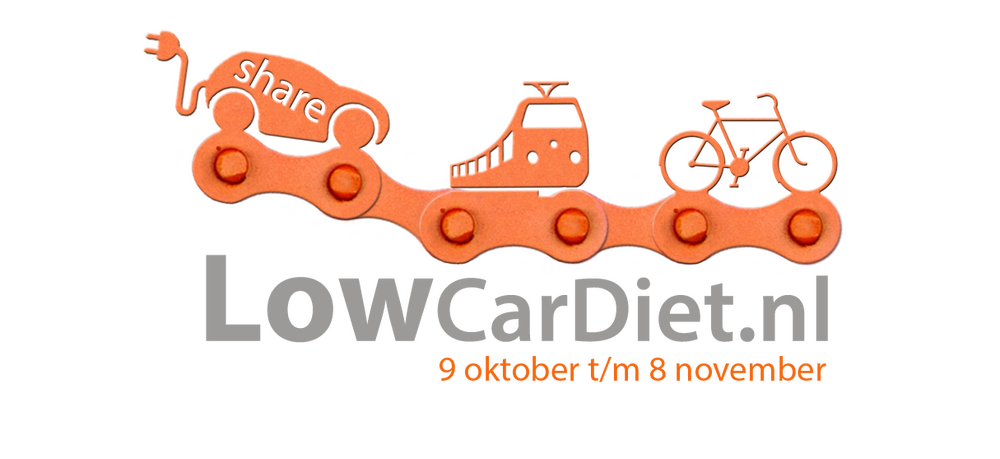
42% van de deelnemers aan het Low Car Diet 2014, die in 30 dagen gebruik maakten van andere vormen van vervoer dan de eigen auto, reizen 11 weken na de start nog altijd bewuster. Dit resulteert tevens in 30% minder autokilometers en 28% minder CO2-uitstoot. Dit blijkt uit onderzoek van gedragsdeskundig adviesbureau Dijksterhuis & Van Baaren.
"In het onderzoek* komt naar voren dat er al gedragsverandering plaatsvindt voordat er beleidswijzigingen plaatsvinden. De evaluatie maakt nog eens treffend duidelijk dat onbekend vaak onbemind is. Als medewerkers eenmaal wat vaker andere vormen van vervoer gebruiken, zoals het OV en de highspeed e-bike, ontdekken ze de voordelen. Bijvoorbeeld dat je in de trein ook echt tijd voor jezelf hebt om te werken of een boek te lezen. Tevens bleek dat een derde van de deelnemers na afloop van het Low Car Diet wel anders zou willen reizen, maar zich onvoldoende gestimuleerd voelt door hun werkgever. Bedrijven kunnen hier dus daadwerkelijk een belangrijke rol in spelen,” vertelt Geert Kloppenburg, expert in mobiliteitstransitie van Urgenda.
“Telkens sta ik er nu bij stil waarom ik voor de auto kies. Kan het ook anders? Het relaxt treinen is me namelijk goed bevallen”, aldus een medewerker van Arcadis, deelnemer in 2014. 36
Low Car Diet: goedkoper en gezonder
Tijdens het Low Car Diet 2014 maakten 1150 deelnemers, waaronder 100 directeuren, met de mobiliteitskaart een maand lang gratis gebruik maken van OV, OV-fiets, highspeed e-bikes, Greenwheels en vergaderlocaties van Regus. Door gebruik te maken van kennis en tools uit de gedragswetenschap werden deelnemers gestimuleerd anders te gaan reizen. Dit resulteerde in een besparing van 38% op hun mobiliteitskosten en het feit dat de medewerkers 16% meer bewogen.
“Privé maak ik meer gebruik van de fiets”, aldus een medewerker van Unilever, deelnemer in 2014.
Low Car Diet 2015 gestart In 2015 kunnen bedrijven wederom meedoen aan het Low Car Diet, dat inmiddels is gestart. Bedrijven kunnen dit jaar zelf het startmoment kiezen om 30 dagen goedkoper, schoner en gezonder te reizen. De nadruk ligt op beleidswijziging en gedragsverandering. De mogelijkheden van beleidswijzigingen worden verkend in een workshop voorafgaande aan het Low Car Diet. De 30 dagen ‘test periode’ wordt opgevolgd door een sessie om met medewerkers en het bedrijf de resultaten te bespreken en te verankeren in gedrag en beleid zoals het concreet maken van bijvoorbeeld een andere reiskostenregeling. Uit het onderzoek blijkt namelijk dat 33% van de deelnemers wel anders wil reizen, maar onvoldoende wordt gestimuleerd door de werkgever. Veel deelnemers zouden bijvoorbeeld graag een mobiliteitsbudget willen waarbij het ‘anders reizen’ ook bewust beloond wordt.
Deelnemende bedrijven strijden wederom tegen elkaar in een wedstrijd om zoveel mogelijk duurzame kilometers te maken. De winnaar zal bekend gemaakt worden op de Dag van de Duurzaamheid, vrijdag 9 oktober.
Kijk op voor meer informatie en aanmelding op www.lowcardiet.nl
“Ik heb mijn auto verkocht en ben met de trein gaan reizen”, aldus een medewerker van Nike, deelnemer in 2014
Initiatiefnemers Het Low Car Diet is een initiatief van Urgenda in samenwerking met Arriva, Connexxion, EY, Greenwheels, Ministerie I&M, NS, OV-fiets, Regus, Samen op Reis en Veolia
Low Car Diet is tevens een project binnen het samenwerkingsinitiatief Samen op Reis, OpStap naar een beter OV.
*Zie de factsheet met de belangrijkste resultaten van de enquête hieronder.
